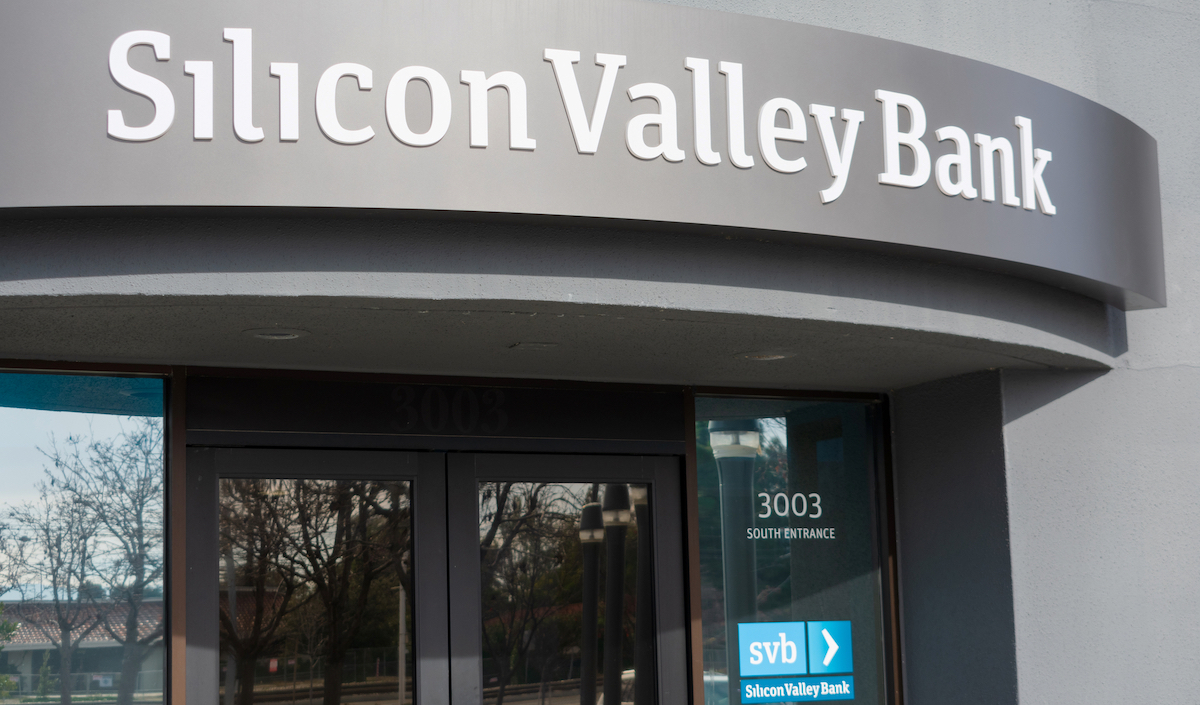
What Does Silicon Valley Bank Failure Mean For Digital Signage Industry? Hard To Say … Yet
March 13, 2023 by Dave Haynes
Weekend e-mails with some industry contacts were all about what was going on with the run on, and then failure of, Silicon Valley Bank and what that might mean for some companies in the digital signage ecosystem.
There was already talk of 2023-24 looking like a very rough stretch for companies that are still growing and rely on outside investors for growth and operating capital, and then SVB failed on Friday.
It was looking disastrous for established tech companies and start-ups through much of the weekend because they couldn’t access cash deposits, with companies wondering how they were going to make payroll and pay bills this week.
But then there was news last night that via the Federal Deposit Insurance Corporation that depositors will have access to all of their money today. The same goes for Signature Bank, which was closed on Sunday.
The fed says any losses to the Deposit Insurance Fund incurred to make uninsured depositors whole will be recouped by a special assessment on banks. The Biden administration says this is not a bank bailout, but let’s assume right wing observers think otherwise.
So it is hard to say just yet what this all means, though I doubt many smart people will just shrug and think that was just a bump in the road and everything is fine again.
The tech company arguably most exposed by SVB’s failure was Roku, the streaming set-top device and platform company, which has almost $500 million in cash with SVB. That was relevant to the digital signage industry because BrightSign – the dominant media play-out device company in pro AV – is a Roku spin-out.
There is shared DNA, but Roku and BrightSign are separate companies. I contacted BrightSign CEO Jeff Hastings, who said his company doesn’t bank with SVB and was unaffected by this …. which is a big Phew!
I have no idea how or if other companies had a hairy weekend worrying about cash flow for this week, but there are lots and lots of smaller companies who rely on investment dollars to grow and to get, one day, to a cash-flow positive operating state.
This Yahoo Finance story does a good rundown of what’s going on at the moment …
And I thought this explainer posted on Linkedin by entrepreneur Ken Kuang was a good summary of how and why SVB went down:
Silicon Valley Bank (SVB) was thriving. Credit losses are fairly low. Its deposits TRIPLED from 2019 to ‘21.
How’s that a problem? It sounds great, right?
1. When banks accept deposits from clients, they OWE the client that money. So deposits are liabilities to the bank. Liabilities cost money……”cost” both to serve those clients (branches, tellers etc ) and any interest the bank pays you on your checking account (deposit).
2. To pay for the cost of those liabs, banks turn them into assets: lending deposits as small business loans, mortgages, etc.
If a bank can’t lend deposits responsibly, it often uses excess to BUY loans or “securities,” like US Treasuries & Mortgage Backed Securities (MBS)
3. As mentioned above, from 2019-2021, the deposits tripled! SVB needed to take those funds & acquire “assets” to pay its costs.
4. Much of the $ was from VC-backed companies that needed a place to deposit the $ they raised. Those are big deposits.
5. Deposits were pouring in too fast to lend responsibly. SVB recognized that. Rather than make dumb loans, SVB bought assets guaranteed by the US government – Treasuries and MBS. BUT, it bought long duration. Often 10+ year bonds.
Mistake!
6. When rates rise, fixed income prices fall.
A general rule of thumb is for every one year of “duration,” each 1% interest rate move impacts the price of the bond by:
1% x Duration
A 1% move on a 9 yr duration bond is ~9% +/- on the bond price.
But banks are levered…
7. Remember: banks generally acquire assets by using deposits (liabilities) as the capital source.
And banks like SVB are levered 10:1 or more: owing $10+ for every $1 of shareholder equity.
If you’re levered 10x, a 10% loss on assets is a 100% wipeout.
8. So SVB bought high quality assets, but it bought tons of them with LONG duration at LOW interest rates.
When the Fed raised rates, those assets declined in value…
…1% x Duration.
Those losses, multiplied through the leverage at SVB, caused a big problem!
9. SVB now has a mark-to-market hole in its balance sheet. It’s “just” mark-to-market: as long as its liabilities are sticky (ie, depositors leave their money SVB), it will ultimately be fine.
But that’s a big “if.”
10. Technically, if all the depositors ask for their $ back at once, SVB needs to sell those bonds at the mark-to-market value, crystallizing what could have been a temporary loss. And if those losses are big enough, it may not have enough money to pay out all depositors.
11. But that situation rarely happens. However, once it starts, game theory kicks in: NOBODY wants to be the last depositor at a bank.
12. Which brings us to today. SVB has large depositors. Large depositors aren’t fully insured by the FDIC – they have an incentive to find HIGHLY sound banks. Once a whiff of issue pops up, large depositors run…“bank run.”
13. As a bank’s deposits go in reverse, it has to sell assets. The FHLB steps in to help turn its less liquid assets into more liquid.



Leave a comment